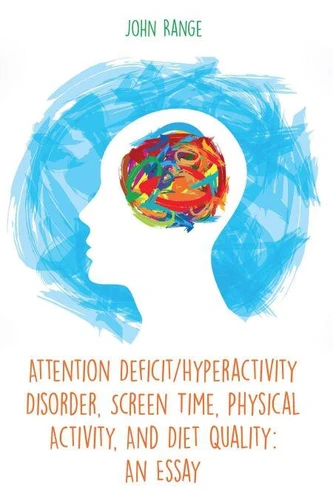Attention Deficit/Hyperactivity Disorder, Screen Time, Physical Activity, And Diet Quality: An Essay
Par :Formats :
Disponible dans votre compte client Decitre ou Furet du Nord dès validation de votre commande. Le format ePub est :
- Compatible avec une lecture sur My Vivlio (smartphone, tablette, ordinateur)
- Compatible avec une lecture sur liseuses Vivlio
- Pour les liseuses autres que Vivlio, vous devez utiliser le logiciel Adobe Digital Edition. Non compatible avec la lecture sur les liseuses Kindle, Remarkable et Sony
 , qui est-ce ?
, qui est-ce ?Notre partenaire de plateforme de lecture numérique où vous retrouverez l'ensemble de vos ebooks gratuitement
Pour en savoir plus sur nos ebooks, consultez notre aide en ligne ici
- FormatePub
- ISBN8201294618
- EAN9798201294618
- Date de parution26/04/2021
- Protection num.pas de protection
- Infos supplémentairesepub
- ÉditeurJL
Résumé
Youth with attention-deficit/hyperactivity disorder (ADHD) may engage in sub-optimal health behaviors including high levels of screen time, low physical activity participation, and consumption of poor diets. These are independent risk factors for adverse health outcomes, and health-related behavior patterns established in childhood can track into adulthood. Thus, identifying and addressing dietary and physical activity habits in populations of youth have important implications for health over the lifespan.
In this book, we found that the diagnosis of ADHD and/or its symptoms are associated with less-than-recommended levels of screen time and poor diet quality, though youth, in general, were found to be engaging in suboptimal sedentary, physical activity, and dietary behaviors.
In this book, we found that the diagnosis of ADHD and/or its symptoms are associated with less-than-recommended levels of screen time and poor diet quality, though youth, in general, were found to be engaging in suboptimal sedentary, physical activity, and dietary behaviors.
Youth with attention-deficit/hyperactivity disorder (ADHD) may engage in sub-optimal health behaviors including high levels of screen time, low physical activity participation, and consumption of poor diets. These are independent risk factors for adverse health outcomes, and health-related behavior patterns established in childhood can track into adulthood. Thus, identifying and addressing dietary and physical activity habits in populations of youth have important implications for health over the lifespan.
In this book, we found that the diagnosis of ADHD and/or its symptoms are associated with less-than-recommended levels of screen time and poor diet quality, though youth, in general, were found to be engaging in suboptimal sedentary, physical activity, and dietary behaviors.
In this book, we found that the diagnosis of ADHD and/or its symptoms are associated with less-than-recommended levels of screen time and poor diet quality, though youth, in general, were found to be engaging in suboptimal sedentary, physical activity, and dietary behaviors.








